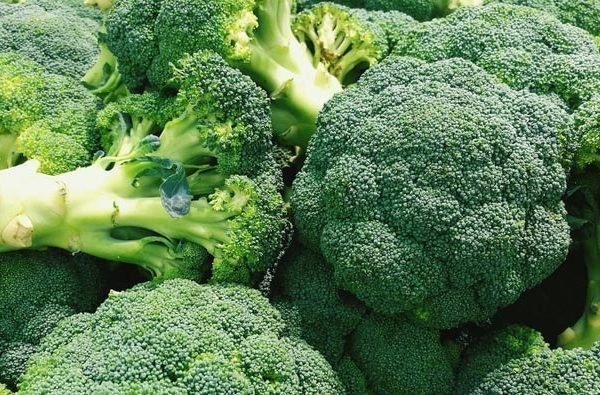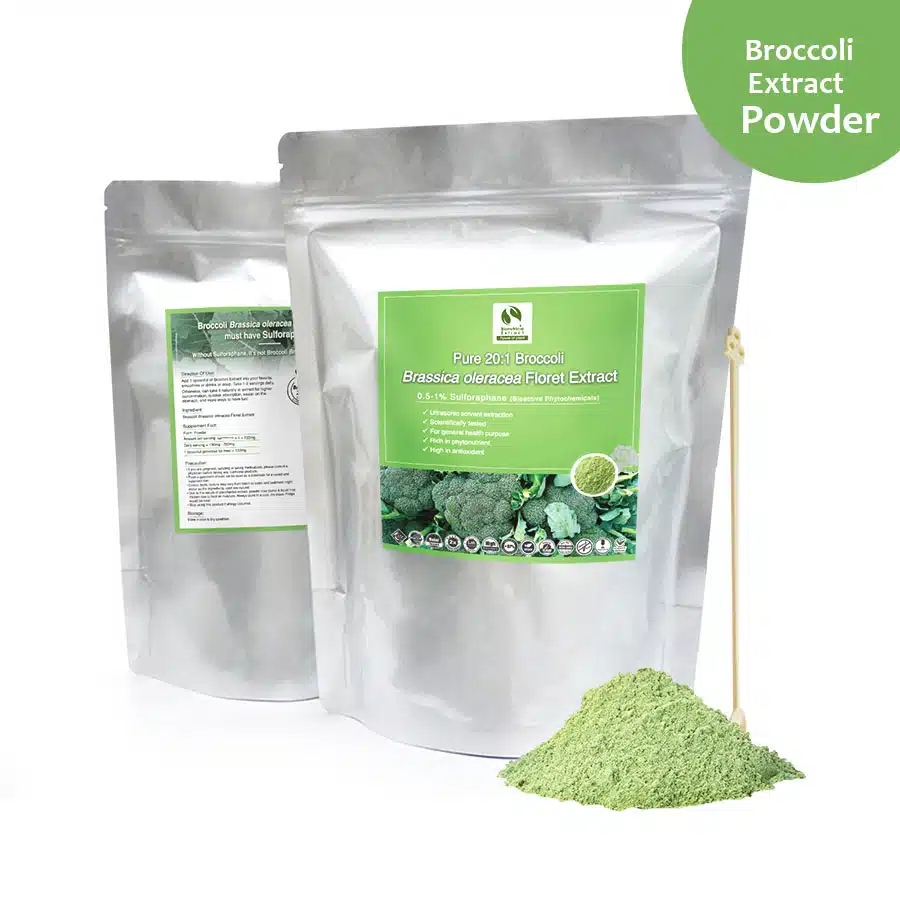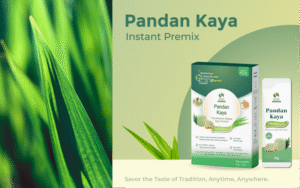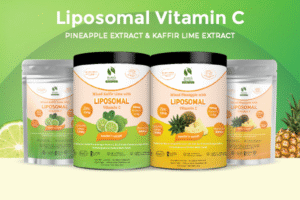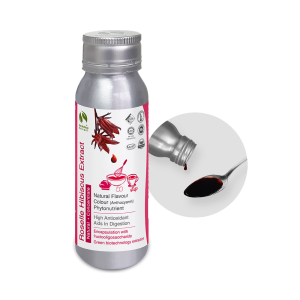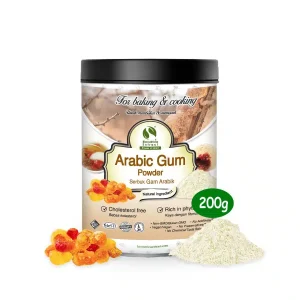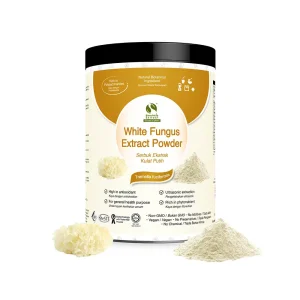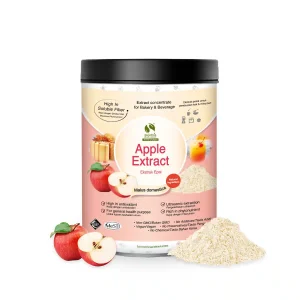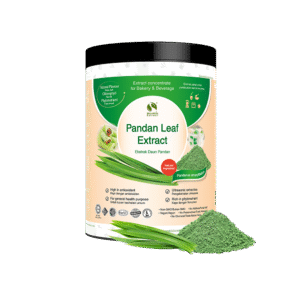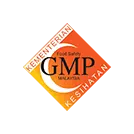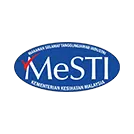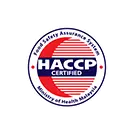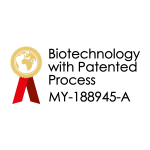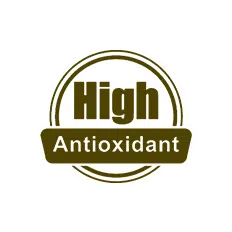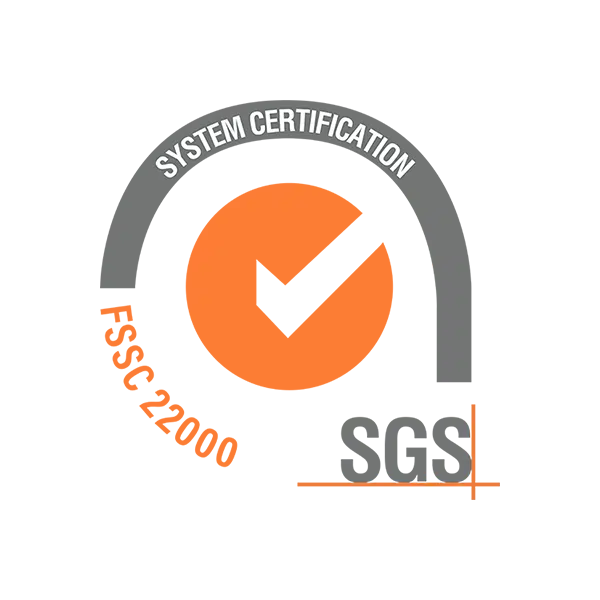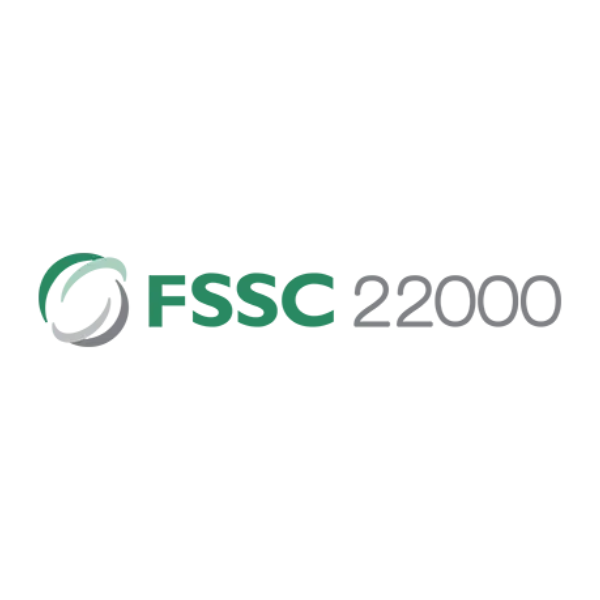Broccoli is a member of the cabbage or mustard family (Brassicaceae, syn. Cruciferae) of about 330 genera and 3,500 species, including about 40 Brassica species.1 Varieties of B. oleracea (wild cabbage) have been cultivated for at least 2,000 years.2,3 Brassica oleracea var. italica (broccoli) has green leaves and a green flowerhead (the edible inflorescence)1 that bears green, purple, yellow, or white flowers.4 It may be grown as an annual, biennial (flowers in the second year), or perennial crop, depending on the type of broccoli and region.5,6 Different types of B. oleracea var. italica have morphological variations. For example, Calabrese broccoli has a single large flowerhead, while sprouting broccoli bears several relatively small flowerheads,7 and Romanesco broccoli flowerheads have multiple cone-shaped spirals of small flower buds.8
Brassica oleracea is believed to be the phylogenetic parent of broccoli,9 is native to Atlantic coastal Europe, and occurs along the coasts of the United Kingdom, Germany, France, and Spain.10 There are two European subspecies: B. oleracea subsp. bourgeaui, which is endemic to the Canary Islands of Spain, and B. oleracea subsp. oleracea, which occurs along coastal northern Spain, western and northern France, the British Isles, and the Heligoland archipelago of Germany.10 However, an emerging alternate theory suggests that Atlantic coast wild populations may actually be re-naturalized plants that escaped from cultivation and that B. oleracea, initially domesticated in a Mediterranean location, reached the Atlantic coast later.3
The geographic origins of the domestication of broccoli and cauliflower (Brassica oleracea var. botrytis) remain inconclusive due to many factors, including an absence of clearly identified archaeological remains, a lack of ancient illustrations, linguistic ambiguities, high polymorphism (the plants occur in several different forms), ease of escaping cultivation and re-naturalizing in the wild, and the ability to easily hybridize with wild relatives.11 It is believed that parts of southern Italy, including Sicily and other Italian islands, are the main center of broccoli diversity due to the wide range of broccoli landraces (locally adapted traditional varieties) present there today.12 The italica cultivar group is believed to have been domesticated, by human selection, from crop wild relatives in the Mediterranean Basin and eventually improved into landrace types. This most likely took place in parts of the southern Italian Peninsula and Sicily. Italian landraces that are believed to be italica primitive cultivars include “Broccolo Nero,” “Mugnoli” from the Salento region, and “Cavolo Broccolo Calabrese Tardivo,” a Sicilian landrace.13 There are also unique landraces outside of Italy, such as “Bróquil,” of which two different types are grown in northeastern Spain: the “Green Bróquil” type (bróquil verde) and the “Headed Bróquil” type (bróquil pellado).12 Italica landraces from Italy, however, have been found to be more genetically diverse than those developed outside of Italy.13
Significant diversification of morphological types of cultivated varieties of B. oleracea is believed to be the result of human selection.11 While this article concerns the italica variety (broccoli), much of the cited literature also discusses the many related varieties, such as Brussels sprouts (B. oleracea var. gemmifera), cabbage (B. oleracea var. capitata), cauliflower (which has some colloquial broccoli crop names, such as heading broccoli, perennial broccoli, bouquet broccoli, and white-sprouting broccoli),7 Chinese broccoli (may be B. oleracea var. alboglabra,4 B. rapa subsp. chinensis, or B. rapa subsp. parachinensis8), collard (B. oleracea var. acephala), and kohlrabi (B. oleracea var. gongylodes).11
Global production and trade data statistics lump broccoli together with cauliflower. Of all Brassica food crops, broccoli and cauliflower are the most widely grown globally, with a cumulative production area of about 1.4 million hectares (3.46 million acres).13 In 2019, an estimated 26.9 million tons (fresh weight) of broccoli and cauliflower were produced globally, and just two countries, China and India, accounted for about 73% of total production. Ranking a distant third, the United States accounted for only about 4.6% of global production.14 Most broccoli grown in the United States is F1 (Filial 1 = first children) hybrids (i.e., selective breeding by cross-pollinating two different parent plants), whereas most cauliflower varieties are highly inbred, uniform, and self pollinating.8 Interestingly, the main exporters are not necessarily the main producers. In 2019, the top six exporters of fresh or chilled broccoli and cauliflower, in terms of volume, were Mexico, Spain, France, the United States, China, and Italy.15 This suggests either significant domestic consumption in both China and India or transformation of fresh or chilled broccoli or cauliflower by the top exporting countries into other dried, frozen, or processed forms.
HISTORY AND CULTURAL SIGNIFICANCE
The etymology of the genus name Brassica has been disputed for centuries as to whether it was originally derived from Celtic, Greek, or Latin.7 In Latin, Brassica means “cabbage” or “cole,” and oleracea means “vegetable crop.”16 In 1700, French botanist Joseph Pitton de Tournefort (1656–1708) named the genus Brassica and several Brassica species in his publication Institutiones Rei Herbariae.17 In his 1737 work Genera Plantarum, Swedish botanist Carl Linnaeus (1707–1778) also listed the genus Brassica and made reference to Tournefort.18 Later, in his 1753 work Species Plantarum, Linnaeus described several more Brassica species.19 The variety italica, referring to the cultivated variety of Italy, was named by Austrian botanist and physician Joseph Jakob von Plenck (1738–1807) in his 1794 publication Icones Plantarum Medicinalium.20 The common name “broccoli” also has been reported to mean “bucktooth” and is believed to have been a Latin colloquial term referring to the projecting shoots of plants of the cabbage family.9 Other sources describe broccoli as an Italian word derived from the Latin brachium, which means “arm” or “branch”7 and is applicable to various edible floral shoots, including those of cabbages.4
In early literature, no clear distinction was made between broccoli and cauliflower.5 Furthermore, there are almost no known historical records of folk- or traditional-medicine uses of broccoli. While unspecified coles or cabbages were reportedly used in ancient Greece and ancient Rome to prevent or treat drunkenness and related headaches, specific references to cultivated broccoli have not been verified.11 In Europe, this use persisted into medieval times, and some considered it a magical use of cabbages.21 The rational medicinal uses of broccoli are associated with findings of late 20th-century research.
In 1990, the 41st president of the United States, George H.W. Bush (1924–2018) famously remarked:
I do not like broccoli. And I haven’t liked it since I was a little kid. And my mother made me eat it. And I’m President of the United States. And I’m not gonna eat any more broccoli!22
On January 6, 1993, in the Federal Register, the US Food and Drug Administration (FDA) published a final rule concerning health claims on food labeling. This rule approved cancer risk reduction claims for the labeling of broccoli.23 In the Handbook of Medicinal Herbs (CRC Press, 1985) by American botanist James A. Duke, PhD (1929–2017), the broccoli monograph provides a dosage recommendation of “eat some almost every day, but don’t overdo it.”24
From 1998 through 2008, several US patents were granted to inventor Jed W. Fahey, ScD, of Johns Hopkins University School of Medicine, and colleagues, including methods for preparing foods and dietary ingredients from broccoli seeds25 and sprouts,26 identifying cancer chemoprotectant foods,27-30 producing broccoli and cauliflower germplasm with high levels of cancer chemoprotectant compounds,31 preventing or inhibiting the growth of Helicobacter species of bacteria using compounds found in broccoli,32,33 and producing topical formulations that contain a phase II enzyme inducer precursor and an activating agent (the induction of phase II enzymes protects cells against oxidative stress and carcinogens).34
CURRENT AUTHORIZED USES IN COSMETICS, FOODS, AND MEDICINES
While the United States Department of Agriculture (USDA) provides standards for quality grades of broccoli for food use,35,36 a draft quality standards monograph for “Broccoli Seed Dry Extract,” for use as a dietary ingredient in dietary supplements, was published for public comment in the Pharmacopeial Forum in May 2020.37 The final monograph is expected to enter the United States Pharmacopeia (USP) by 2022.
For food use, the USDA’s “United States Standards for Grades of Broccoli for Processing” define two qualities: US No. 1 and US No. 2.35 The “United States Standards for Grades of Frozen Broccoli” define three qualities: US Grade A, US Grade B, and Substandard.36 The FDA also provides this model health claim that may be used in broccoli food labeling:
Low fat diets rich in fruits and vegetables (foods that are low in fat and may contain dietary fiber, vitamin A, and vitamin C) may reduce the risk of some types of cancer, a disease associated with many factors. Broccoli is high in vitamins A and C, and it is a good source of dietary fiber.38
Broccoli herb, seed, sprout, and extracts (e.g., Broccoli Seed Dry Extract USP)37 may also be used in dietary supplements, which require FDA notification within 30 days of marketing if a structure-function claim is made and product manufacturing that adheres to current Good Manufacturing Practices (cGMPs).39
In Canada, a labeling standards monograph for licensed Natural Health Products (NHPs) that contain indole-3-carbinol (extracted from broccoli or other sources) as an active ingredient was published in 2015.40 Another NHP monograph, published in 2017, includes broccoli herb top (fresh or dried) as an antioxidant medicinal ingredient.41 In addition to use as a conventional food, broccoli herb top may also be used as an active ingredient of licensed NHPs, which require pre-marketing authorization from the Natural and Non-prescription Health Products Directorate (NNHPD). Licensed NHPs that contain a broccoli herb top preparation equivalent to 10 grams of dried broccoli or 100 grams of fresh broccoli may be labeled with a claim statement to the effect of “Provides antioxidants that help protect against cell damage caused by free radicals.”41 Licensed NHPs containing indole-3-carbinol (obtained from B. oleracea var. italica whole plant) may be labeled with the claim statement “Helps to support/promote healthy estrogen metabolism/balance” (dosage: 200-400 mg indole-3-carbinol/day) in addition to the antioxidant statement (dosage: up to 400 mg indole-3-carbinol/day).40
In the European Union, several specified broccoli ingredients are authorized for use in cosmetic products: “Brassica Oleracea Italica (seed) Extract” for skin conditioning function; “Brassica Oleracea Italica (sprout) Extract” for skin conditioning and emollient functions; “Brassica Oleracea Italica (whole plant) Extract” for astringent function; “Brassica Oleracea Italica Juice” for antioxidant and skin conditioning functions; and “Brassica Oleracea Italica Seed Oil” for hair conditioning, skin conditioning, and emollient functions.42
MODERN RESEARCH
Brassica vegetables contain an array of nutritional and phytochemical compounds, such as sulfur-containing glucosinolates (GSs). These compounds also are found in other plant families.43,44 Notably, GSs are biologically inactive to humans and are dependent on an enzyme called myrosinase, which is released when broccoli plant tissue undergoes cutting, chewing, or maceration to produce bioactive isothiocyanates (ITCs) and indoles in a bioavailable form. Some components of human intestinal microflora may also break down broccoli plant tissue and have myrosinase-like activity.45-49 GS variations and content levels and GS-derived bioactive components are impacted by growing and environmental conditions, plant accessions, and harvest processing.50,51
Broccoli contains high levels of glucoraphanin (GR), a common GS that hydrolyzes to form sulforaphane (SF), the major ITC in broccoli.46,49,52 GR represents up to 90% of the GS content in broccoli, which, of all Brassica vegetables, is the predominant source of SF.49,50,53 In 1992, a group of scientists led by the late Paul Talalay, MD, at Johns Hopkins University first described SF isolated from broccoli.54 It was later discovered that young broccoli sprouts (at day 3) contained the highest levels of GR, at 20-50 times more than mature plants.55,56 These bioactive GS-derived metabolites have demonstrated beneficial health effects in animal models, cell cultures, and in vitro studies. However, human clinical trials are limited. Few randomized controlled trials of broccoli appear in the literature, with several inconsistencies, including varying sample sizes, health outcomes, and the types of dosage forms, concentrations, and characteristic constituents analyzed.44,53,57,58
Laboratory and Animal Studies
SF’s biological properties have received significant attention. One of the main activities reported in the literature is cytoprotective activity, which is due to its ability to upregulate and increase activity of phase II detoxifying enzymes (e.g., superoxide dismutase, catalase, glutathione peroxidase, glutathione reductase, and glutathione S-transferase [GST]).44,59,60 Findings suggest that SF is an indirect antioxidant based on its ability to induce phase II detoxification enzymes and cytoprotective proteins.56,61-66 In a study by Yoxall et al (2005),67 rats were given SF equivalent to 3 and 12 mg/kg per day for 10 days. SF upregulated CYP1A2 levels and modulated xenobiotic-metabolizing enzyme systems (xenobiotic-metabolizing enzymes include phase II enzymes).67 Other studies associated with SF’s cytoprotective effects found that SF induced GSTA1 in human enterocytes (intestinal cells) in vivo68 and inhibited CYP2E1 enzyme activity in hepatocytes (liver cells) of rats.69
SF’s anti-inflammatory properties also have been demonstrated in vitro and in vivo and are due to the activation of the NF-E2-related factor 2 (Nrf2)-dependent antioxidant response-signaling pathway.56,59,66 SF has been found to inactivate nuclear factor kappa-B (NF-kB),59,70 which plays a key role as a modulator of inflammatory pathways, and inhibit inflammatory cytokine production in immune cells.71 Also, crude extracts of broccoli floret and stems (cultivar Avenger) have shown antibacterial and antifungal properties.72 SF was tested against a total of 28 microbial species in vitro to determine activity against bacterial and fungal pathogens. SF inhibited 23 of the 28 microbial species tested, with a minimum inhibitory concentration (MIC) ranging from 1-4 µg/mL.73
Another study included three genotoxicity experiments wherein broccoli seed extract showed no mutagenic activity in the Ames assay and no evidence of genotoxic potential in in vivo assays at doses up to 10 g/kg body weight. The LD50 (lethal dose 50, the dose that kills 50% of a test sample) was greater than 10 g/kg body weight/day. In summary, no significant toxicological findings were found.74
Human Studies
Broccoli generally has been included among cruciferous vegetables studied in epidemiological observational studies to evaluate if these vegetables may be associated with lower risk of disease progression and mortality,75 specifically in various types of cancers49,76,77 and cardiovascular disease.78 In the 1980–2010 Nurses’ Health Study, a review of vegetable and fruit consumption of a total of 8,927 women with stage I–III breast cancer found a correlation between higher intake of green leafy and cruciferous vegetables and lower all-cause mortality.75 Several meta-analyses have suggested a reduced risk of cancer may be associated with Brassica vegetable consumption.44,77,79-82 A meta-analysis by Liu et al (2013)79 of 13 epidemiological studies (11 case-control and two cohort studies, with a pooled total of 18,673 cases) suggested a reduced risk of breast cancer may be associated with cruciferous vegetable consumption. Lam et al (2009)81 reported a weak, inverse relationship between lung cancer risk and cruciferous vegetable intake. Also, a population-based prospective cohort study of 134,796 adults over approximately 10 years found increased consumption of vegetables, particularly cruciferous vegetables, was inversely associated with cardiovascular disease.78
A systematic review by Conzatti et al (2014)53 included 17 randomized clinical trials (RCTs) that were published from 2003 to 2013 and investigated the health benefits of broccoli, GR, and SF. Eleven of the 17 studies reviewed broccoli sprouts in various forms (e.g., powdered, fresh, homogenized, or beverage infusions). Findings related to changes in oxidative stress, blood glucose, and lipid profiles were more consistent, but less evidence was found in study designs related to inflammation, H. pylori infection, and cancer protection. More human studies are needed.53 However, suggestive, correlative, observational, and epidemiological evidence indicates both the rationale and safety of broccoli or broccoli preparations as dietary components that may help prevent and/or treat some chronic and degenerative conditions.56
Bahadoran et al (2011) conducted a randomized, double-blind, placebo-controlled (RDBPC) trial that evaluated a high-SF broccoli sprout powder (BSP) (BroccoPhane®; Bioriginal Food & Science Corp.; Saskatoon, Saskatchewan; standardized to SF content at about 22.5 µmol/g) and changes in oxidative stress in people with type 2 diabetes. Three groups were randomly assigned to receive either 10 grams of BSP per day (n = 21), five grams of BSP per day (n = 22), or placebo (n =20). After four weeks, both treatment groups showed a significant decrease in malondialdehyde (an oxidative stress marker) and oxidized low-density lipoprotein (LDL) cholesterol compared to placebo. Participants experienced increased antioxidant capacity and decreased oxidative stress index. The authors reported mild gastrointestinal events but no serious adverse events.59,83
Mirmiran et al (2012)84 published a separate analysis of BroccoPhane’s effects on patients with type 2 diabetes using the same study population as Bahadoran et al (2011). Serum high-sensitivity C-reactive protein (hs-CRP), interleukin-6 (IL-6), and tumor necrosis factor alpha (TNF-a), which are all inflammatory markers, were measured at the beginning of the study and after four weeks. Hs-CRP decreased significantly in the two BroccoPhane groups; other markers decreased but not significantly.84
A RDBPC trial over two months investigated if broccoli sprout extract capsules (Kagome Co., Ltd.; Nagoya, Japan; extract produced from selected seeds of Caudill Seed Co. Inc. [Louisville, Kentucky]; each capsule containing 10 mg extract with about 23 µmol of GR) would alter liver function tests of male participants with hepatic abnormalities. Participants were included if they had higher levels of at least one of three liver function markers for the previous two months and were diagnosed with fatty liver disease by ultrasound. After two months, participants who received three capsules per day of broccoli sprout extract (n = 24) exhibited a significant decrease in the liver function markers alanine aminotransferase and ɣ-glutamyl transpeptidase compared to placebo (n = 28). Physical parameters such as body mass index and waist circumference did not change significantly. No adverse events were reported, and the authors stated that improvement of liver function was most likely related to reduced oxidative stress.60,85
Riedl et al (2009), Egner et al (2011 and 2014), and Singh et al (2014) used the branded ingredient BroccoSprouts® (Brassica Protection Products; Baltimore, MD) and licensed technology from Johns Hopkins University to produce the investigational preparations. In a placebo-controlled, dose-escalation trial of the effects of SF (using broccoli sprout homogenate) on human nasal lavage cells, Riedl et al (2009) found that SF enhanced (dose-dependent) phase II antioxidant expression in human airway cells compared to placebo. The authors reported that adverse events were mild, mostly gastrointestinal, with one report of nasal congestion and no serious adverse events.86 A follow-up, pre-post study using a SF-rich broccoli sprout extract (prepared by Johns Hopkins) showed preventive and therapeutic potential for ameliorating allergic disease symptoms exacerbated by air pollution.87
Egner et al (2011)88 evaluated the bioavailability and tolerability of SF from two different types of broccoli sprout-derived beverages, one rich in GR (containing 800 µmol) and the other rich in SF (containing 150 µmol). Fifty adults were assigned randomly and asked to avoid cruciferous vegetables during the study time. The study had a five-day run-in period, seven days of one beverage, and another seven days of the other beverage. Throughout the study, urine samples were collected, and isotope dilution mass spectrometry was used to measure GR, SF, and SF thiol conjugates. The bioavailability of SF (measured by urinary excretion of SF and its metabolites) was greater in the SF-rich beverage compared to the GR-rich beverage. Adverse events included nausea or vomiting associated with the odor or ingestion of the SF beverage, and no abnormal blood parameters were found.57,88
In a 12-week randomized clinical trial by Egner et al (2014), 291 healthy adults, who lived in areas known to have high levels of airborne pollutants, were given either a broccoli sprout beverage (containing 600 µmol GR/day and 40 µmol SF/day) or a placebo beverage. A total of 267 adults completed the study. The outcomes included increases in urinary excretion of glutathione-derived conjugates of benzene, a human carcinogen, and acrolein in the treatment group. Adverse events occurred in the first week of the trial, and mild gastrointestinal discomfort and unacceptable taste were the main complaints. Overall, the study reported no abnormal blood parameter values.57,89
A RDBPC trial (Singh et al, 2014) evaluated if SF derived from broccoli sprout extracts positively impacted behavior in young men from ages 13 to 27 with moderate to severe autism spectrum disorder. For 18 weeks, the SF treatment group (n = 29), which received daily oral doses of 50-150 µmol SF (dosed according to body weight), showed substantial declines in Aberrant Behavior Checklist and Social Responsiveness Scale scores, which means behavior improvement, compared to placebo (n = 15).57,90 The treatment group also experienced significant improvements in social interaction, verbal communication, and abnormal behavior on the Clinical Global Impression-Improvement (CGI-I) scale.
Once the treatment was discontinued, the participants’ total scores returned to pre-treatment status. SF was well tolerated, and adverse events were reported in 12–19% of SF participants (similar to the placebo group), with a total of 36 adverse events reported during the trial. Gastrointestinal symptoms, headache, fever, vomiting, seasonal allergies, and increased aggression were notable, and two study participants reported single unprovoked seizures: one participant with undisclosed seizure history had a seizure after three weeks of treatment, and the other participant with a history of seizures controlled by medications had a seizure three weeks after discontinuing treatment.90
To assess the safety and tolerability of oral broccoli sprout extracts, Shapiro et al (2006)91 performed a phase I clinical study with 12 healthy volunteers, who were divided into three cohorts (A, B, and C), each containing three treated subjects and one placebo subject. For seven days, cohort A received 25 µmol of GSs, cohort B received 100 µmol of GSs, and cohort C received 25 µmol of ITCs. Throughout the study time, extensive lab parameters were measured, and special attention was given to liver and thyroid function tests. At the end of the study, the authors reported no significant abnormal findings from the study preparations, but the study was short and had a small sample size.91
Broccoli is a well-known cruciferous vegetable and commonly consumed throughout the world. The FDA lists broccoli as one of the top 20 vegetables consumed in the United States (21CFR §101.44), and also partly based its authorization of cancer risk reduction claims on broccoli’s high vitamin A and vitamin C contents and its being a good source of dietary fiber (21CFR §101.78). There is no FDA regulation on dietary intake amounts of GSs. In 2004, the World Health Organization’s International Agency for Research on Cancer (IARC) reported49 that daily consumption of more than 50 mg of certain types of GSs may have goitrogenic effects (goitrogens are substances that impair thyroid hormone synthesis, often by inhibiting iodine uptake in the thyroid). However, the long-term relationships between iodine and cruciferous vegetable intake are still not understood. Commercial broccoli has been found to contain less than 10 µmol of goitrin per 100 g serving and is assumed to be of minimal risk in relation to thyroid function.92 At this time, no severe adverse reactions from broccoli preparations or SF have been reported.93
ADULTERATION
The FDA considers frozen broccoli to be adulterated (i.e., contaminated) if it contains 60 or more aphids, thrips, or mites (or any combination of these) per 100 grams.94 One analytical method development and validation study, using a new cyclodextrin-mediated capillary zone electrophoretic method, analyzed 14 dietary supplement product samples (13 labeled as containing broccoli in some form and one containing wild cabbage). For many of the samples, the results did not support the product label descriptions. Several samples appeared to contain broccoli from older plant development stages, as evidenced by higher amounts of indole-derived GSs and very low concentrations of aliphatic GSs. Non-broccoli GSs also were detected in two samples, while another two samples contained no measurable GSs.95
SUSTAINABILITY AND FUTURE OUTLOOK
The International Union for Conservation of Nature (IUCN) assigns wild B. oleracea to the conservation category of data deficient (DD), meaning that insufficient information is available to evaluate the species. In Germany, the species is listed as Critically Endangered (CR), and in France, it is a protected species in the western regions of Basse-Normandie and Poitou-Charentes.10
Small farmers traditionally have carried out seed-saving and informal selection practices for in situ (on farm site) preservation of diverse and locally adapted broccoli landraces. The more diverse italica landraces from Italy reportedly need both ex situ (preservation of the landrace outside of its traditional production area) and in situ conservation.13 Today, most of the world’s broccoli is not produced in its original geographical area of Mediterranean southern Europe, but rather in eastern Asia (China) and southern Asia (India), which may have some implications for the preservation of traditional European broccoli crop landraces.
According to Wang et al (2011):96 “Stable production of cruciferous vegetables will be more and more difficult with climate change by biotic or non-biotic stress with higher average temperature, drought, higher sea level, salinity of soil, disease or pest changing.” In recent years, plant breeding and agricultural crop research that is focused on climate change adaptation strategies for cruciferous vegetable crops, especially broccoli and cauliflower, have increased globally. The USDA Agricultural Research Service has carried out experimental breeding of broccoli for adaptation to potentially high-temperature environments.97 Brassica species germplasm (including natural accessions and breeding populations of broccoli) is also being maintained at sites globally for sustainable management, in view of increasing quantities of food that will be needed to support projected global population growth combined with climate change-related stresses.98
References
- Cheo TY, Lu LL, Guang Y, Al-Shehbaz IA. Brassicaceae (Cruciferae). In: Wu Z, Raven PH, eds. Flora of China. Vol 8. Beijing, China and St. Louis, MO: Science Press and Missouri Botanical Garden Press; 2001:1-193.
- POWO. Plants of the World Online. Facilitated by the Royal Botanic Gardens, Kew; www.plantsoftheworldonline.org. Accessed June 17, 2021.
- Maggioni L. Domestication of Brassica oleracea L. Alnarp, Sweden: Faculty of Landscape Architecture, Horticulture and Crop Production Science, Department of Plant Breeding, Swedish University of Agricultural Sciences; 2015.
- Dixon GR. The origins of edible brassicas. Plantsman. 2017;16(3):180-185.
- Gray AR. Taxonomy and evolution of broccoli (Brassica oleracea var. italica). Econ Bot. 1982;36(4):397-410.
- Martin CA, Sideman RG. Survival and yields of fall-planted winter sprouting broccoli grown in high tunnels for spring harvest in the northeastern United States. HortTechnology. 2012;22(3):345-352.
- Dixon GR. Origins and Diversity of Brassica and Its Relatives. In: Dixon GR, ed. Vegetable Brassicas and Related Crucifers. Wallingford, UK: CAB International; 2006:1-33.
- Organisation for Economic Co-operation and Development. Consensus Document on the Biology of the Brassica Crops (Brassica spp.). Series on Harmonisation of Regulatory Oversight in Biotechnology No. 54. Paris, France: OECD Environment Directorate. December 18, 2012: Unclassified: ENV/JM/MONO(2012)2041.
- Buck PA. Origin and taxonomy of broccoli. Econ Bot. 1956;10(3):250-253.
- Holubec V, Uzundzhalieva K, Vörösváry G, Donnini D, Bulińska Z, Strajeru S. Brassica oleracea. The IUCN Red List of Threatened Species. 2011:e.T170110A6717557. http://dx.doi.org/10.2305/IUCN.UK.2011-1.RLTS.T170110A6717557.en. Accessed June 17, 2021.
- Maggioni L, von Bothmer R, Poulsen G, Lipman E. Domestication, diversity and use of Brassica oleracea L., based on ancient Greek and Latin texts. Genet Resour Crop Evol. 2018;65(1):137-159.
- Montaner C, Zufiaurre R, Mallor C. Bróquil (Brassica oleracea var. italica) landraces in the Aragón region (northeastern Spain). Landraces. 2020;5:19-22.
- Stansell Z, Björkman T. From landrace to modern hybrid broccoli: The genomic and morphological domestication syndrome within a diverse B. oleracea collection. Hortic Res. 2020;7(1):159.
- FAOSTAT Database. Food and Agriculture Organization of the United Nations website. Available at: www.fao.org/faostat/en/#data/QC; 2021. Accessed June 17, 2021.
- UN Comtrade Database. 2021. Available at: https://comtrade.un.org/. Accessed June 17, 2021.
- Maggioni L, von Bothmer R, Poulsen G, Branca F. Origin and domestication of cole crops (Brassica oleracea L.): Linguistic and literary considerations. Econ Bot. 2010;64(2):109-123.
- Tournefort JP. Institutiones Rei Herbariae, editio altera. Vol I. Paris, France: E Typographia Regia; 1700.
- Linné Cv. Caroli Linnæi … Genera plantarum eorumque characteres naturales secundum numerum, figuram, situm, & proportionem omnium fructificationis partium. Lugduni Batavorum :: apud C. Wishoff; 1737.
- Linné Cv, Salvius L. Caroli Linnaei … Species plantarum : exhibentes plantas rite cognitas, ad genera relatas, cum differentiis specificis, nominibus trivialibus, synonymis selectis, locis natalibus, secundum systema sexuale digestas. Vol 2. Holmiae :: Impensis Laurentii Salvii; 1753.
- von Plenck JJ. Icones plantarum medicinalium secundum systema Linnaei digestarum : cum enumeratione virium et usus medici chirurgici atque diaetetici. Vol 6. Vienna, Austria: Apud Rudolphum Graeffer et Soc; 1794.
- Weil MS. Magiferous Plants in Medieval English Herbalism. Lawrence, KS: Department of History, University of Kansas; 1975.
- George H. W. Bush broccoli comments. Wikipedia.org. Last modified August 12, 2021. Available at: https://en.wikipedia.org/wiki/George_H._W._Bush_broccoli_comments. Accessed June 17, 2021.
- US Food and Drug Administration. 21 CFR Part 101. Food labeling: Health claims and label statements: Antioxidant vitamins and cancer. Federal Register. January 6, 1993;58(3):2622-2660.
- Duke JA, Bogenschutz-Godwin MJ, duCellier J, Duke PAK. Handbook of Medicinal Herbs. 2nd ed. Boca Raton, FL: CRC Press; 2002.
- Fahey JW, Talalay P. Method of preparing a food product from cruciferous seeds. United States Patent 5,725,895. Alexandria, VA: United States Patent and Trademark Office; March 10, 1998.
- Fahey JW, Talalay P. Method of preparing a food product from cruciferous sprouts. United States Patent 5,968,567. Alexandria, VA: United States Patent and Trademark Office; October 19, 1999.
- Fahey JW, Talalay P. Cancer chemoprotective food products. United States Patent 5,968,505. Alexandria, VA: United States Patent and Trademark Office; October 19, 1999.
- Fahey JW, Talalay P. Cancer chemoprotective food products. United States Patent 6,177,122. Alexandria, VA: United States Patent and Trademark Office; January 23, 2001.
- Fahey JW, Talalay P. Cancer Chemoprotective food products. United States Patent 6,242,018. Alexandria, VA: United States Patent and Trademark Office; June 5, 2001.
- Fahey JW, Talalay P. Cancer chemoprotective food products. United States Patent 7,303,770. Alexandria, VA: United States Patent and Trademark Office; December 4, 2007.
- Fahey JW. Development of novel highly chemoprotectant crucifer germplasm. United States Patent 6,521,818. Alexandria, VA: United States Patent and Trademark Office; February 18, 2003.
- Fahey JW. Treatment of Helicobacter with isothiocyanates. United States Patent 6,737,441. Alexandria, VA: United States Patent and Trademark Office; May 18, 2004.
- Fahey JW. Treatment of Helicobacter with isothiocyanates. United States Patent 7,402,569. Alexandria, VA: United States Patent and Trademark Office; July 22, 2008.
- Talalay P, Fahey JW. Formulations for treatment with glucosinolates. United States Patent 8,927,007. Alexandria, VA: United States Patent and Trademark Office; January 6, 2015.
- United States Department of Agriculture. United States Standards for Grades of Broccoli for Processing. Washington, DC: USDA Agricultural Marketing Service; Effective October 4, 1959 (Reprinted January 1997).
- United States Department of Agriculture. United States Standards for Grades of Frozen Broccoli. Washington, DC: USDA Agricultural Marketing Service; Effective date January 22, 1980.
- United States Pharmacopeial Convention. Broccoli Seed Dry Extract. Pharmacopeial Forum. May 2020;46(3).
- US Food and Drug Administration. 21 CFR §101.78 Health claims: fruits and vegetables and cancer. Code of Federal Regulations. Washington, DC: Office of the Federal Register, National Archives and Records Administration 2020.
- US Food and Drug Administration. 21 CFR Part 111 Current Good Manufacturing Practice in Manufacturing, Packaging, Labeling, or Holding Operations for Dietary Supplements; Final Rule. Federal Register. 2007;72(121):34752-34958.
- Natural and Non-prescription Health Products Directorate. Natural Health Product: Indole-3-Carbinol. Ottawa, ON, Canada: Health Canada; 2015.
- Natural and Non-prescription Health Products Directorate. Natural Health Product: Antioxidants. Ottawa, ON, Canada: Health Canada; 2017.
- European Commission. Cosmetic Ingredient (CosIng) Database. Brussels, Belgium: DG Internal Market, Industry, Entrepreneurship and SMEs; 2020.
- Fahey JW, Zalcmann AT, Talalay P. The chemical diversity and distribution of glucosinolates and isothiocyanates among plants. Phytochemistry. 2001;56(1):5-51.
- Traka MH. Health Benefits of Glucosinolates. In: Kopriva S, ed. Advances in Botanical Research — Glucosinolates. Vol 80. Cambridge, MA: Academic Press; 2016:247-279.
- Shapiro TA, Fahey JW, Wade KL, et al. Human metabolism and excretion of cancer chemoprotective glucosinolates and isothiocyanates of cruciferous vegetables. Cancer Epidemiol Biomarkers Prev. 1998;7(12):1091-1100.
- Clarke JD, Hsu A, Riedl K, et al. Bioavailability and inter-conversion of sulforaphane and erucin in human subjects consuming broccoli sprouts or broccoli supplement in a cross-over study design. Pharmacol Res. 2011;64(5):456-463.
- Mahn A, Reyes A. An overview of health-promoting compounds of broccoli (Brassica oleracea var. italica) and the effect of processing. Food Sci Technol Int. 2012;18(6):503-514.
- Baenas N, Marhuenda J, García-Viguera C, et al. Influence of cooking methods on glucosinolates and isothiocyanates content in novel cruciferous foods. Foods. 2019;8(7):257.
- International Agency for Research on Cancer (IARC). Cruciferous Vegetables, Isothiocyanates and Indoles. IARC Handbooks of Cancer Prevention. Vol 9. Lyon, France: IARC Press; 2004.
- Kushad MM, Brown AF, Kurilich AC, et al. Variation of glucosinolates in vegetable crops of Brassica oleracea. J Agric Food Chem. 1999;47(4):1541-1548.
- Jeffery EH, Brown AF, Kurilich AC, et al. Variation in content of bioactive components in broccoli. J Food Compos Anal. 2003;16(3):323-330.
- Baenas N, García-Viguera C, Moreno DA. Biotic elicitors effectively increase the glucosinolates content in Brassicaceae sprouts. J Agric Food Chem. 2014;62(8):1881-1889.
- Conzatti A, Fróes FC, Schweigert Perry ID, Souza CG. Clinical and molecular evidence of the consumption of broccoli, glucoraphanin and sulforaphane in humans. Nutr Hospit. 2014;31(2):559-569.
- Zhang Y, Talalay P, Cho CG, Posner GH. A major inducer of anticarcinogenic protective enzymes from broccoli: Isolation and elucidation of structure. Proc Natl Acad Sci. 1992;89(6):2399-2403.
- Fahey JW, Zhang Y, Talalay P. Broccoli sprouts: An exceptionally rich source of inducers of enzymes that protect against chemical carcinogens. Proc Natl Acad Sci. 1997;94(19):10367-10372.
- Houghton CA. Sulforaphane: Its ‘coming of age’ as a clinically relevant nutraceutical in the prevention and treatment of chronic disease. Oxid Med Cell Longev. 2019;2019:2716870.
- Yagishita Y, Fahey JW, Dinkova-Kostova AT, Kensler TW. Broccoli or sulforaphane: Is it the source or dose that matters? Molecules. 2019;24(19):3593.
- Fahey JW, Kensler TW. The challenges of designing and implementing clinical trials with broccoli sprouts… and turning evidence into public health action. Front Nutr. 2021;8(183):648788.
- Bahadoran Z, Mirmiran P, Azizi F. Potential efficacy of broccoli sprouts as a unique supplement for management of type 2 diabetes and its complications. J Med Food. 2013;16(5):375-382.
- Esteve M. Mechanisms underlying biological effects of cruciferous glucosinolate-derived isothiocyanates/indoles: A focus on metabolic syndrome. Front Nutr. 2020;7(111).
- Fahey JW, Talalay P. Antioxidant functions of sulforaphane: A potent inducer of Phase II detoxication enzymes. Food Chem Toxicol. 1999;37(9-10):973-979.
- Talalay P, Fahey JW. Phytochemicals from cruciferous plants protect against cancer by modulating carcinogen metabolism. J Nutr. 2001;131(11):3027S-3033S.
- Gao X, Dinkova-Kostova AT, Talalay P. Powerful and prolonged protection of human retinal pigment epithelial cells, keratinocytes, and mouse leukemia cells against oxidative damage: The indirect antioxidant effects of sulforaphane. Proc Natl Acad Sci. 2001;98(26):15221-15226.
- Gao X, Talalay P. Induction of phase 2 genes by sulforaphane protects retinal pigment epithelial cells against photooxidative damage. Proc Natl Acad Sci. 2004;101(28):10446-10451.
- Dinkova-Kostova AT, Talalay P. Direct and indirect antioxidant properties of inducers of cytoprotective proteins. Mol Nutr Food Res. 2008;52(S1):S128-S138.
- Bai Y, Wang X, Zhao S, et al. Sulforaphane protects against cardiovascular disease via Nrf2 activation. Oxid Med Cell Longev. 2015;2015:407580.
- Yoxall V, Kentish P, Coldham N, et al. Modulation of hepatic cytochromes P450 and phase II enzymes by dietary doses of sulforaphane in rats: Implications for its chemopreventive activity. Int J Cancer. 2005;117(3):356-362.
- Petri N, Tannergren C, Holst B, et al. Absorption/metabolism of sulforaphane and quercetin, and regulation of phase II enzymes, in human jejunum in vivo. Drug Metab Dispos. 2003;31(6):805-813.
- Barcelo S, Gardiner JM, Gescher A, Chipman JK. CYP2E1-mediated mechanism of anti-genotoxicity of the broccoli constituent sulforaphane. Carcinogenesis. 1996;17(2):277-282.
- Heiss E, Herhaus C, Klimo K, et al. Nuclear factor kappa B is a molecular target for sulforaphane-mediated anti-inflammatory mechanisms. J Biol Chem. Aug 24 2001;276(34):32008-32015.
- Bessler H, Djaldetti M. Broccoli and human health: Immunomodulatory effect of sulforaphane in a model of colon cancer. Int J Food Sci Nutr. 2018;69(8):946-953.
- Pacheco-Cano RD, Salcedo-Hernández R, López-Meza JE, et al. Antimicrobial activity of broccoli (Brassica oleracea var. italica) cultivar Avenger against pathogenic bacteria, phytopathogenic filamentous fungi and yeast. J Appl Microbiol. 2018;124(1):126-135.
- Johansson NL, Pavia CS, Chiao JW. Growth inhibition of a spectrum of bacterial and fungal pathogens by sulforaphane, an isothiocyanate product found in broccoli and other cruciferous vegetables. Planta Med. 2008;74(07):747-750.
- Zhou Y, Yang H, Li Y, et al. Broccoli seed extract: Genotoxicity and subchronic toxicity studies. Regul Toxicol Pharmacol. 2015;73(1):442-451.
- Farvid MS, Holmes MD, Chen WY, et al. Postdiagnostic fruit and vegetable consumption and breast cancer survival: Prospective analyses in the Nurses’ Health Studies. Cancer Res. 2020;80(22):5134-5143.
- Verhoeven DT, Goldbohm RA, van Poppel G, et al. Epidemiological studies on brassica vegetables and cancer risk. Cancer Epidemiol Biomarkers Prev. 1996;5(9):733-748.
- Bosetti C, Filomeno M, Riso P, et al. Cruciferous vegetables and cancer risk in a network of case-control studies. Ann Oncol. 2012;23(8):2198-2203.
- Zhang X, Shu X-O, Xiang Y-B, et al. Cruciferous vegetable consumption is associated with a reduced risk of total and cardiovascular disease mortality. Am J Clin Nutr. 2011;94(1):240-246.
- Liu X, Lv K. Cruciferous vegetables intake is inversely associated with risk of breast cancer: A meta-analysis. Breast. 2013;22(3):309-313.
- Liu B, Mao Q, Lin Y, et al. The association of cruciferous vegetables intake and risk of bladder cancer: A meta-analysis. World J Urol. 2013;31(1):127-133.
- Lam TK, Gallicchio L, Lindsley K, et al. Cruciferous vegetable consumption and lung cancer risk: A systematic review. Cancer Epidemiol Biomarkers Prev. 2009;18(1):184-195.
- Steinbrecher A, Nimptsch K, Hüsing A, et al. Dietary glucosinolate intake and risk of prostate cancer in the EPIC-Heidelberg cohort study. Int J Cancer. 2009;125(9):2179-2186.
- Bahadoran Z, Mirmiran P, Hosseinpanah F, et al. Broccoli sprouts reduce oxidative stress in type 2 diabetes: A randomized double-blind clinical trial. Eur J Clin Nutr. 2011;65(8):972-977.
- Mirmiran P, Bahadoran Z, Hosseinpanah F, et al. Effects of broccoli sprout with high sulforaphane concentration on inflammatory markers in type 2 diabetic patients: A randomized double-blind placebo controlled clinical trial. J Func Foods. 2012;4(4):837-841.
- Kikuchi M, Ushida Y, Shiozawa H, et al. Sulforaphane-rich broccoli sprout extract improves hepatic abnormalities in male subjects. World J Gastroenterol. 2015;21(43):12457-12467.
- Riedl MA, Saxon A, Diaz-Sanchez D. Oral sulforaphane increases Phase II antioxidant enzymes in the human upper airway. Clin Immunol. 2009;130(3):244-251.
- Heber D, Li Z, Garcia-Lloret M, et al. Sulforaphane-rich broccoli sprout extract attenuates nasal allergic response to diesel exhaust particles. Food Funct. 2014;5(1):35-41.
- Egner PA, Chen JG, Wang JB, et al. Bioavailability of sulforaphane from two broccoli sprout beverages: Results of a short-term, cross-over clinical trial in Qidong, China. Cancer Prev Res (Phila). 2011;4(3):384-395.
- Egner PA, Chen J-G, Zarth AT, et al. Rapid and sustainable detoxication of airborne pollutants by broccoli sprout beverage: Results of a randomized clinical trial in China. Cancer Prev Res. 2014;7(8):813-823.
- Singh K, Connors SL, Macklin EA, et al. Sulforaphane treatment of autism spectrum disorder (ASD). Proc Natl Acad Sci. 2014;111(43):15550-15555.
- Shapiro TA, Fahey JW, Dinkova-Kostova AT, et al. Safety, tolerance, and metabolism of broccoli sprout glucosinolates and isothiocyanates: A clinical phase I study. Nutr Cancer. 2006;55(1):53-62.
- Felker P, Bunch R, Leung AM. Concentrations of thiocyanate and goitrin in human plasma, their precursor concentrations in brassica vegetables, and associated potential risk for hypothyroidism. Nutr Rev. 2016;74(4):248-258.
- Su X, Jiang X, Meng L, et al. Anticancer activity of sulforaphane: The epigenetic mechanisms and the Nrf2 signaling pathway. Oxid Med Cell Longev. 2018;2018:5438179.
- US Food and Drug Administration. CPG Sec 585.260 Broccoli, Frozen — Adulteration with Insects. Compliance Policy Guide. Rockville, MD: US Food and Drug Administration; December 1988.
- Lechtenberg M, Hensel A. Determination of glucosinolates in broccoli-based dietary supplements by cyclodextrin-mediated capillary zone electrophoresis. J Food Compos Anal. 2019;78:138-149.
- Wang ST, Hseu SH, Chen KS, et al. Adjusting breeding strategies of cruciferous vegetable to match challenges of climate change. Proceedings of the Workshop on Crop Breeding and Management of Agricultural Environment for Coping with Climate Change. Taichung, Taiwan: Taiwan Agricultural Research Institute, Council of Agriculture; 2011:135-152.
- Farnham MW, Bjorkman T. Breeding vegetables adapted to high temperatures: A case study with broccoli. HortScience. 2011;46(8):1093-1097.
- Zhang Y, Neik TX, Amas JC, et al. DNA-based screening of Brassica germplasm for sustainable and enhanced crop production. In: Dulloo ME, ed. Plant Genetic Resources. A Review of Current Research and Future Needs. 1st ed. London, UK: Burleigh Dodds Science Publishing; 2021:289-317.

